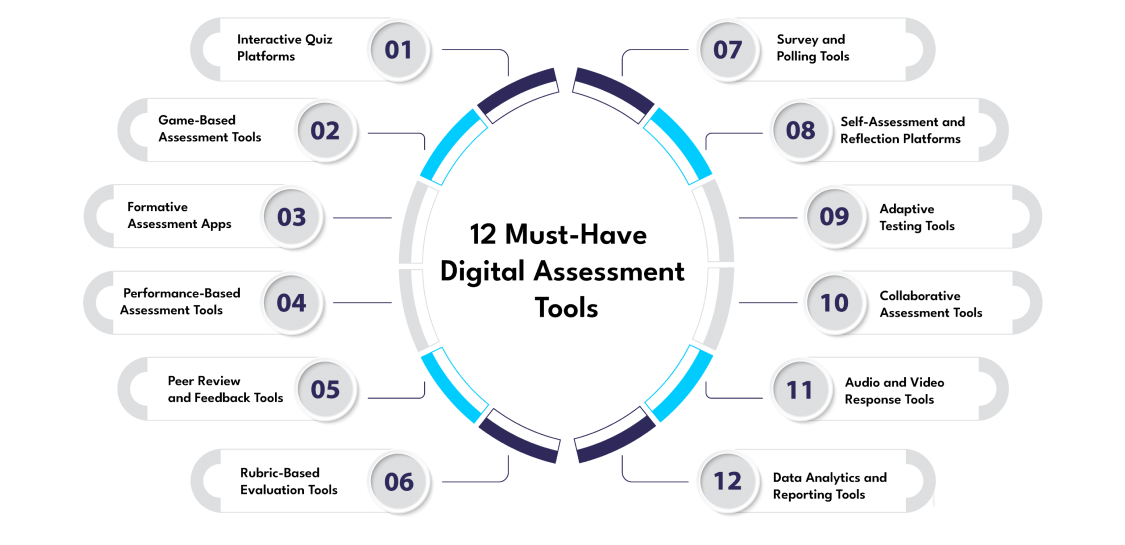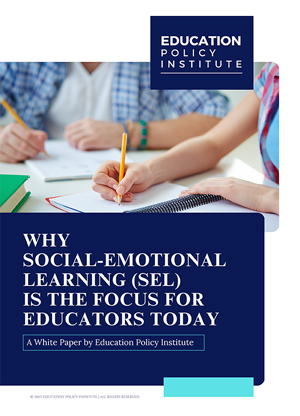12 Game-Changing Digital Assessment Tools for Student Progress
July 18, 2025As classrooms become increasingly digitized, the methods educators use to evaluate student progress are rapidly evolving. Traditional pen-and-paper tests are giving way to smarter, more flexible digital tools that not only measure learning but also inform instruction, personalize feedback, and track development over time. Digital assessment tools are no longer just a convenience; they are essential instruments in creating dynamic, student-centered learning environments.
The power of these tools lies in their ability to offer real-time insights, support varied learning styles, and promote meaningful engagement. They help teachers adapt to student needs, identify gaps early, and build a more transparent learning journey. Digital assessment tools are changing how learning is checked by using interactive features, instant feedback, and helpful data. They help teachers understand what students need, improve the way they teach, and make learning more effective for everyone.
What Are Digital Assessment Tools?
Digital assessment tools are technology-based platforms or applications that assist educators in evaluating student performance, understanding, and progress. These tools offer an alternative to traditional assessments by incorporating interactive formats such as quizzes, games, multimedia responses, and real-time feedback. They can be used for both formative and summative assessments and are often integrated into digital learning environments.
Unlike paper-based methods, digital tools offer scalability, automation, and deeper data insights. They also allow for immediate evaluation and adaptability, making assessments more efficient and personalized for diverse learning needs.
Advantages of Digital Assessment Tools
Digital tools bring multiple advantages to the assessment process. They reduce grading time, provide instant feedback, and help teachers pinpoint specific learning gaps. Unlike traditional tests, these tools offer varied formats that appeal to diverse learners. They also support differentiated instruction by giving real-time insight into student needs.
Moreover, they make assessment more continuous rather than episodic. Teachers no longer have to wait until the end of a unit to discover who needs help. With ongoing data, support can be timely and effective. Digital tools also contribute to more equitable evaluation, as they allow for accommodations and alternative expressions of understanding.
Other key advantages include:
- Efficiency: Automated scoring and feedback save time and reduce the administrative burden on teachers, allowing them to focus more on instruction.
- Engagement: Interactive elements such as visuals, games, and instant feedback capture student attention and create a more dynamic learning experience.
- Flexibility: Tools support different types of assessments, such as quizzes, discussions, projects, or oral responses, making it easier to reach all types of learners.
- Transparency: Students and parents can monitor academic progress through dashboards or progress reports, promoting accountability and goal setting.
- Data-Driven Decisions: Rich analytics help educators identify learning trends, adapt lesson plans, and implement timely interventions for better student outcomes.
12 Must-Have Digital Assessment Tools
The digital landscape offers a wide range of tools designed to assess learning in diverse, effective ways. Here are twelve essential tools that can help educators measure progress, provide meaningful feedback, and enrich the overall learning experience.

1. Interactive Quiz Platforms
These tools allow educators to create customizable quizzes with various question types like multiple choice, true/false, and short answer. Features such as immediate feedback, progress tracking, and time-bound challenges make assessments engaging and insightful. Educators can use analytics to spot patterns in performance and adjust instruction accordingly.
2. Game-Based Assessment Tools
Gamified assessment platforms combine learning with elements of play. Through educational games, students demonstrate understanding while earning points, badges, or rankings. This approach reduces test anxiety and motivates learners by transforming assessments into low-pressure, interactive experiences.
3. Formative Assessment Apps
These tools are designed to support ongoing evaluation during the learning process. Teachers can pose quick questions, polls, or exit tickets to gauge comprehension. Responses can be reviewed in real time, enabling immediate intervention and clarification when needed.
4. Performance-Based Assessment Tools
Instead of focusing solely on answers, these platforms emphasize student-created content such as videos, digital portfolios, and project submissions. Educators can evaluate creativity, problem-solving, and application of knowledge, offering a more holistic view of student learning.
5. Peer Review and Feedback Tools
Enabling students to assess each other’s work can deepen understanding and promote collaboration. These platforms structure the peer review process with guided criteria and anonymous submission, encouraging constructive feedback and reflection on both sides.
6. Rubric-Based Evaluation Tools
Rubric generators and digital evaluators make grading more consistent and transparent. Teachers can design rubrics with clearly defined criteria and levels of achievement. These tools help standardize grading across assignments and make expectations clear to students.
7. Survey and Polling Tools
Often overlooked as assessment tools, surveys and polls can gauge student opinion, confidence, and understanding. They are valuable for checking engagement, collecting reflections, or introducing a topic. Teachers can quickly visualize class trends and modify instruction accordingly.
8. Self-Assessment and Reflection Platforms
Encouraging learners to evaluate their own progress builds a sense of responsibility and deeper understanding. These platforms guide students through reflective questions and track growth over time. Students become more aware of their learning goals and areas needing attention.
9. Adaptive Testing Tools
Adaptive assessments adjust difficulty based on student responses, providing a personalized testing experience. They are particularly effective for pinpointing skill levels and offering targeted recommendations. This individualized approach helps both struggling and advanced learners progress efficiently.
10. Collaborative Assessment Tools
These tools support group projects and collaborative learning tasks. Students work together in shared digital spaces, contributing to collective goals while teachers assess participation, communication, and teamwork. They emphasize real-world skills while evaluating academic progress.
11. Audio and Video Response Tools
Some students express themselves better verbally than through writing. These platforms allow learners to record spoken or video responses, particularly useful in language learning, presentations, and oral evaluations. Teachers gain a richer understanding of student abilities through these formats.
12. Data Analytics and Reporting Tools
These tools collect and visualize performance data from assessments over time. Educators can track individual or class-wide progress, identify recurring challenges, and customize future instruction. Dashboards and reports simplify decision-making and enhance learning outcomes.
How to Choose the Right Tools
Selecting the right digital assessment tool depends on your learning goals, subject area, and student needs. Here are a few guiding questions:
- Does the tool align with the skills you want to measure?
- Is it easy to use for both teachers and students?
- Can it integrate with your existing learning platform?
- Does it support multiple types of assessment (formative, summative, peer, etc.)?
- Are privacy and data security adequately addressed?
A combination of tools often works best. For example, using a quiz platform for quick checks, a portfolio tool for project-based learning, and a rubric builder for consistent evaluation can provide a well-rounded assessment strategy.
The Future of Digital Assessment Tools
The future of digital assessment tools lies in increased personalization, automation, and integration with artificial intelligence. As technology advances, these tools are likely to become more intuitive and adaptive, offering hyper-personalized pathways for students based on their unique learning patterns and preferences.
We can also expect deeper integration with learning management systems and virtual learning environments, enabling seamless assessment experiences across platforms. Real-time feedback will become even more precise, and predictive analytics could help educators forecast learning outcomes and intervene earlier.
Furthermore, the role of assessment may shift from grading to guiding, with tools acting as learning companions that provide continuous insight and support. This evolution promises to create more inclusive and responsive education systems that prioritize student growth over scores.
Also Read: How Digital Assessments Enhance Learning Outcomes in Today's Education
Conclusion
Digital assessment tools have shifted the focus of evaluation from mere measurement to meaningful feedback, deeper learning, and continuous improvement. They empower educators to create inclusive, responsive, and efficient classrooms. When used thoughtfully, these tools don’t just track academic performance—they actively support student success.
In a world where education is evolving rapidly, integrating smart assessment tools is not just an upgrade; it's a necessity. Whether you're in a physical classroom, hybrid model, or fully online setting, these tools can transform your approach to evaluation and ultimately enhance the learning experience for every student.





